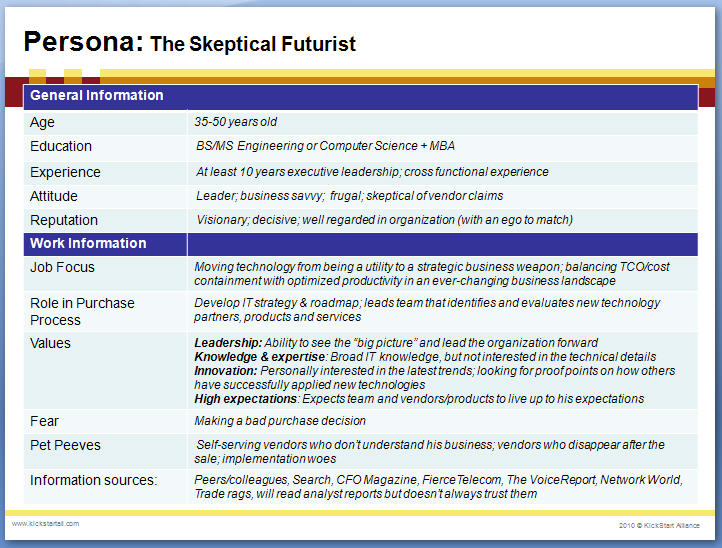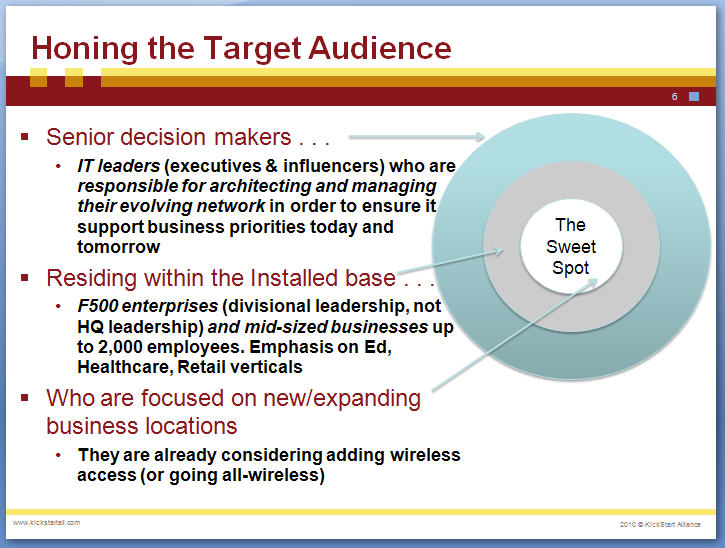If you are selling to CIOs or IT strategists, you may find this post of interest. (Visit The Marketing High Ground blog for more examples of personas.)
Human perception is a tricky thing, for although teams may share a common understanding of their product portfolio, people often have a different idea of who they are selling to. And these differences may be slight, or they may be substantial. The Persona Exercise is one of the most effective (and fun) ways to ensure team alignment regarding the target audience.
Honing in on the bullseye
I was working with a cross-functional marketing team tasked to launch a new product on a very short runway. During a meeting to discuss messaging I asked about the the target audience. I got 5 different answers ranging from network engineers to CIOs in various size companies and industries. There was no time, nor budget, to entertain multiple target audiences, so we focused our discussion to find the sweet spot.
What target audience subsegment offers the best chance for success? Where will it be easiest to win sales quickly and consistently? By the end of our discussion, we painted bullseye picture similar to that shown in figure 1. The sweet spot was not limited to job title or company size. Instead, the sweet spot focused on people who shared a common responsibility of managing today’s IT network while planning for the future.
Personas go beyond traditional market segmentation
The next step was to build a persona. There was a lot of good discussion that answered questions like:
- What is the persona’s pain point? What keeps them up at night?
- What is the persona actually buying from us? (We know what we’re selling, but what are they buying? Hint: you won’t find this on the itemized price list)
- What 3 words best describe this person?

Portrait of a senior IT manager responsible for the current and future network architecture, and who’s afraid of making a bad purchase decision.
By the end of the discussion, we painted the persona shown in Figure 2. We had given life to the “Skeptical Futurist” — the embodiment to senior IT managers who are responsible for architecting their network, and who are troubled by fear of making a bad (or wrong) purchase decision.
Drafting the Skeptical Futurist was an “Aha!” moment for the team.
With the bullseye and persona in hand, 10 sales enablement tools took form — from “How-to-sell” presentations, to the corporate pitch, to the Competitive Quick Reference Guides, to the sales simulation training module.

